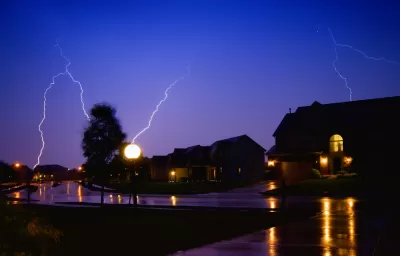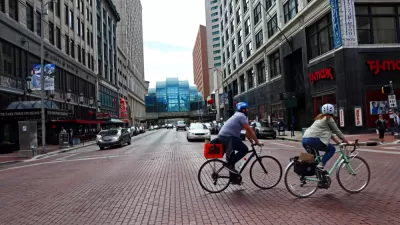The IndyStar shines a light on the city of Indianapolis' neglect of its infrastructure.

A feature article by John Tuohy and Tony Cook documents the consequences of a decision to stop installing streetlights in Indianapolis, made by the city's leaders 35 years ago. The article starts with the tragic story of Amohd Welbon-Cook, when the driver of a blue Chevrolet Avalanche struck and killed him on an unlit stretch of stretch of Georgetown Road.
In other cities, the motorist might have noticed a pedestrian walking along a busy, high-speed street such as Georgetown Road because it likely would have been illuminated by the most basic of city services — a streetlight.
Compounding the public safety problems presented by the city's lack of streetlights, according to Tuohy and Cook, is the city's lack of sidewalks. In sum, Indianapolis is lacking the infrastructure to make for safe pedestrian mobility.
An IndyStar investigation found that 585 pedestrians have been killed in Marion County since the streetlight ban in 1980. Last year, 27 pedestrians were run down, more than in any year since the moratorium started.
According to the article, the lack of pedestrian infrastructure highlights a failure of priorities in the city. While pedestrian safety suffered for lack of decent infrastructure, "billions of dollars flowed to grand Downtown developments, generally celebrated by politicians, the business community and the media as improvements to the city’s quality of life."
The long-read, feature-length article provides more anecdotes and historic examples of the impact of the city's lack of infrastructure. The article also details the financial and political history behind the decision to stop installing streetlights.
For more reading on the subject, Planetizen noted back in June that the city began installing new streetlights for the first time in 35 years. Aaron Renn also offers his perspective on the city's lack of pedestrian infrastructure, describing the situation as a symptom of a much larger problem with streets and alleys around the city.
FULL STORY: Left in the dark: Indy's deadly streets

Alabama: Trump Terminates Settlements for Black Communities Harmed By Raw Sewage
Trump deemed the landmark civil rights agreement “illegal DEI and environmental justice policy.”

Planetizen Federal Action Tracker
A weekly monitor of how Trump’s orders and actions are impacting planners and planning in America.

Why Should We Subsidize Public Transportation?
Many public transit agencies face financial stress due to rising costs, declining fare revenue, and declining subsidies. Transit advocates must provide a strong business case for increasing public transit funding.

Understanding Road Diets
An explainer from Momentum highlights the advantages of reducing vehicle lanes in favor of more bike, transit, and pedestrian infrastructure.

New California Law Regulates Warehouse Pollution
A new law tightens building and emissions regulations for large distribution warehouses to mitigate air pollution and traffic in surrounding communities.

Phoenix Announces Opening Date for Light Rail Extension
The South Central extension will connect South Phoenix to downtown and other major hubs starting on June 7.
Urban Design for Planners 1: Software Tools
This six-course series explores essential urban design concepts using open source software and equips planners with the tools they need to participate fully in the urban design process.
Planning for Universal Design
Learn the tools for implementing Universal Design in planning regulations.
Caltrans
Smith Gee Studio
Institute for Housing and Urban Development Studies (IHS)
City of Grandview
Harvard GSD Executive Education
Toledo-Lucas County Plan Commissions
Salt Lake City
NYU Wagner Graduate School of Public Service





























